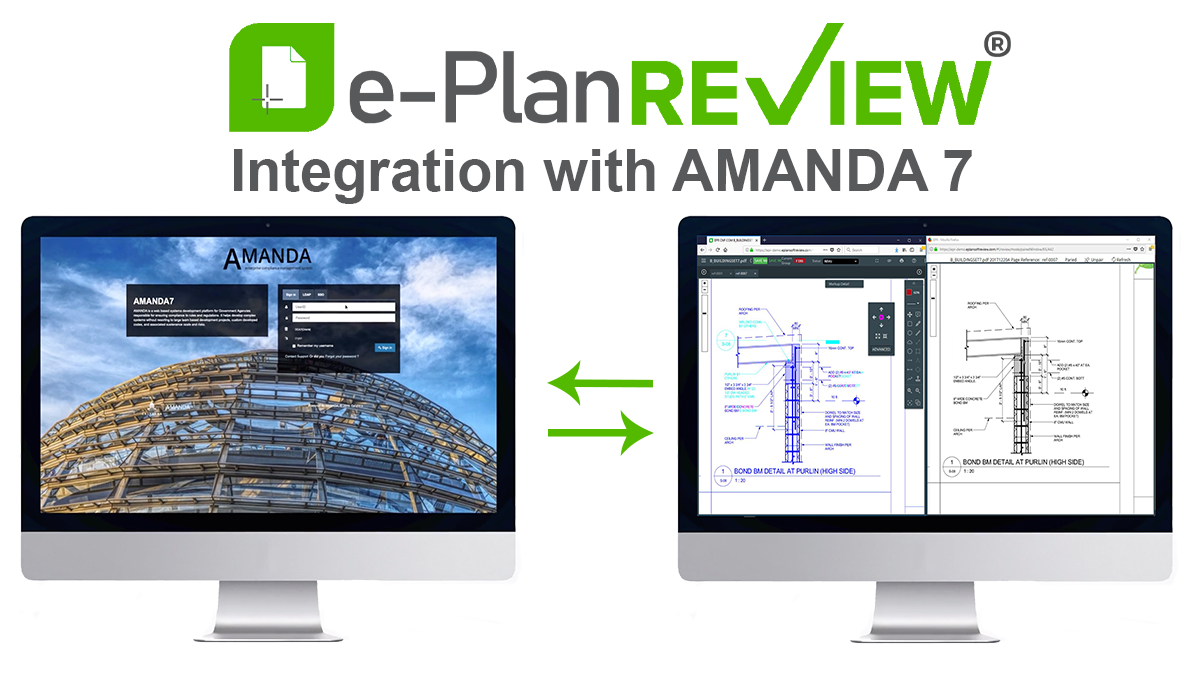3 Reasons Agencies Shouldn’t Tie Their Digital Plan Review Future to a Single Permitting Platform
As agencies modernize their digital plan review workflows, they’re aiming for faster turnaround times, higher transparency, and a more predictable...

Explore our 2024 comparative review, your ultimate guide through the top-tier plan review solutions.

In our previous article, we addressed the challenges and factors that contribute to the success of implementations at the initial or discovery phase. For this article, we’ll address integrations and the factors to ensure a smooth and successful integration and implementation.
The best-managed integrations start with a good understanding of what, how, why, and where the integration works.It is critical to understand how the business processes map to both the permitting product and the electronic plan review product, as well as how the two products communicate with each other. At the onset, the agency implementation team must take the time to understand what has been contracted for the integration, and then outline and document the overview of expectations. With so many different solutions available and an array of options that each provides, there are variables that will affect the course of the implementation and the end goals. Depending on your permitting platform, the way in which your plan review solution integrates with it will vary. A good example of aspects to understand upfront is how the permitting platform manages incoming revisions. Can it connect resubmittals or newly uploaded documents to existing documents? Alternately, will new documents need to be routed to the plan review solution and manually connected? This is just one of many important factors to know at the beginning of the integration because it will affect the integration and workflows. While that’s not the only information needed, the agency implementation team should have a good understanding of what each of their newly integrated solutions will do and what the high-level workflows will be.
Does this sound familiar? If you read our previous article on the discovery phase of implementations, it should. And for good reason. The team composition is critical throughout every phase of the implementation. When building your implementation and integration team, keep in mind that you’ll need participants from both sides of the equation. That means that you’ll need to include both business users who will use the solution as a part of their jobs and technical users, who will support the integration, and provide proper business processes as the integration is completed. Each group will have a different perspective, which means that each will focus on ensuring that the final implemented solution is suitable, functional, and meets the criteria each group has for the solution. And all participants should be included, involved, and engaged from the start. By waiting until the project is already underway, there will be issues found that are inevitably more difficult to resolve when held until later in the project. As important as building the right team, is the engagement of that team. Each participant has an important role and brings a unique perspective, which means that they must fully engage and invest in the project as if its success depends on it. Because it does.
Unit testing throughout the integration can and will save significant time in the long run and ensure that all elements are performing properly and as expected. Without exception and regardless of the systems you’ve selected or how they integrate, unit testing is critical to the integration to ensure the flow of information between the systems is functioning properly and in alignment with the way your business operates. In fact, the only way that you can be sure the integration will be successful is by testing each and every one of the individual elements. Testing should be performed on each element as soon as it is complete to uncover any issues as they arise. By doing so, issues can be corrected right away, preventing problems from compounding, which would happen with subsequent components configured on top of problematic ones. Both the technical and business users supporting the integration must participate in the ongoing testing throughout the full duration of the integration for the best outcome.
One other option in your integration implementation that bears consideration is which phased approach will be most beneficial to your agency. Agencies should consider options other than the standard “permitting, then plan review” approach. For agencies who are implementing a new permitting platform and plan review solution, it may be a better choice to implement the plan review solution and its portal as a standalone solution first, then the permitting platform, and after the permitting platform is ready, then integrate the plan review software.
When a new permitting platform is being selected and implemented, you’re embarking on a lengthy project, which can take 18 months or longer before it’s ready for the plan review solution to be integrated. In the adjusted phased approach, the plan review solution, such as e-PlanREVIEW® is implemented as a standalone solution first with goPost™ Public Portal, and usually in a matter of weeks while the permitting platform is being implemented. As a result, the agency can go fully paperless with its plan reviews within weeks, and enjoy significantly increased efficiency that much faster, too. It’s a great opportunity in this situation to jump-start your efficiency while your team familiarizes with their new plan review solution. Once the permitting platform is implemented, the plan review solution can be integrated as the final phase in the process. The approach has proven to boost efficiency and productivity much sooner, and creates an easier transition for the staff, as they can learn one new system at a time.
One final factor to consider in selecting your integrated solutions is to opt for a solution that has a proven track record of successful integrations. e-PlanREVIEW is built with an open API library, so integrations are not just feasible, but also simple and seamless. e-PlanREVIEW tightly integrates with most leading permitting platforms on the market today and configures to your agency’s processes instead of forcing you to operate with endless workarounds. The result is maximized efficiency that speeds up the time to approval and maintains the highest standards for effectiveness.

As agencies modernize their digital plan review workflows, they’re aiming for faster turnaround times, higher transparency, and a more predictable...

Across government agencies, one theme keeps coming up: staff need to do more with less. Reviewers are juggling high volumes of complex plan sets...

Remote work has become a normal part of life for building and planning departments. Whether during office closures, holidays, or hybrid schedules,...

e-PlanSoft’s e-PlanREVIEW® seamlessly integrates with Calytera’s AMANDA permitting system to help governments digitize and create business continuity...

Across government agencies, one theme keeps coming up: staff need to do more with less. Reviewers are juggling high volumes of complex plan sets...
%20(4).png)
FOR IMMEDIATE RELEASE